
Back Boje v Indickém oceánu za druhé světové války Czech Océan Indien durant la Seconde Guerre mondiale French Teatro dell'Oceano Indiano nella seconda guerra mondiale Italian インド洋の戦い (第二次世界大戦) Japanese 인도양 전구 (제2차 세계 대전) Korean Lautan Hindi dalam Perang Dunia II Malay Hint Okyanusu Cephesi (II. Dünya Savaşı) Turkish
| Indian Ocean Campaign | |||||||
|---|---|---|---|---|---|---|---|
| Part of World War II | |||||||
 Aircraft Carrier HMS Hermes (95) sinking during the Indian Ocean raid | |||||||
| |||||||
| Belligerents | |||||||
|
| ||||||

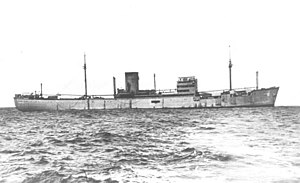
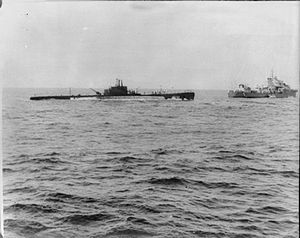


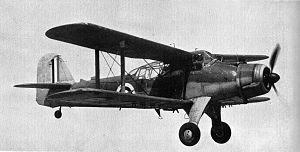







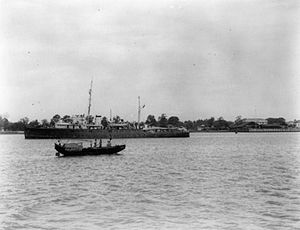


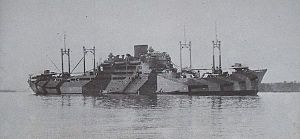


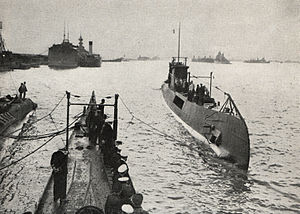




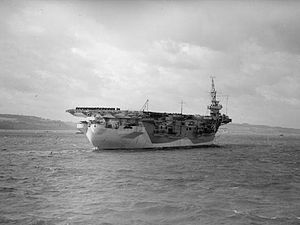





Prior to World War II, the Indian Ocean was an important maritime trade route between European nations and their colonial territories in East Africa, the Arabian Peninsula, British India, Indochina, the East Indies (Indonesia), and Australia for a long time. Naval presence was dominated by the Royal Navy Eastern Fleet and the Royal Australian Navy as World War II began, with a major portion of the Royal Netherlands Navy operating in the Dutch East Indies and the Red Sea Flotilla of the Italian Regia Marina operating from Massawa.
Axis naval forces gave a high priority to disrupting Allied trade in the Indian Ocean. Initial anti-shipping measures of unrestricted submarine warfare and covert raiding ships expanded to include airstrikes by aircraft carriers and raids by cruisers of the Imperial Japanese Navy. A Kriegsmarine Monsun Gruppe of U-boats operated from the eastern Indian Ocean after the Persian Corridor became an important military supply route to the Soviet Union.
© MMXXIII Rich X Search. We shall prevail. All rights reserved. Rich X Search